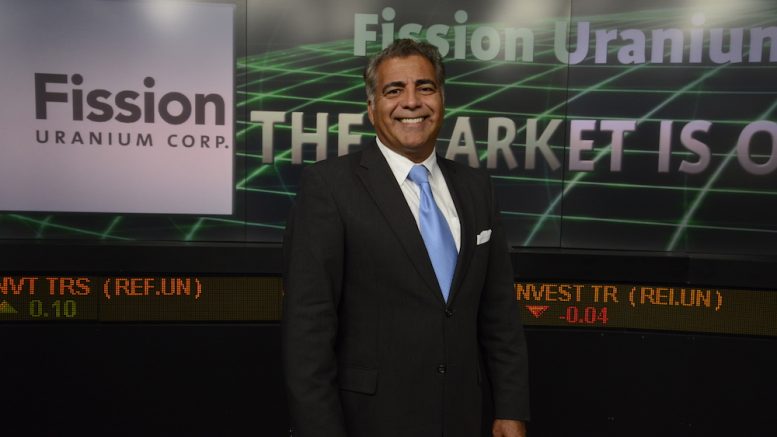The continued industrialization and urbanization of the global economy have thrust energy security back to the fore. According to uranium industry doyen Dev Randhawa, it creates a perfect storm to bring nuclear energy back into its critical role as the baseline power supply in a world increasingly reliant on unreliable renewable power sources such as solar and wind.
“If you simply take the math of how much electricity we need, how fast China and India are growing, and we want to electrify everything we can, it [uranium] has to be part of it,” Randhawa said in an interview.
“I’m seeing things I haven’t seen since I got into the business, like Bill Gates and Warren Buffett spending US$4.2 billion setting up a small reactor in Wyoming. Smart money – follow it – it’s been rushing into the nuclear space for some time now. And it’s a small space,” he said.
“If big money is coming into a small space, we’ve got a correction with uranium prices moving up.”
Bullish analysts believe the uranium market cycle has reached its bottom and that a break to the upside for uranium prices is supported by positive supply and demand fundamentals.
On the demand side, nuclear energy generated from 445 reactors around the globe supplies about 10% of the world’s energy requirements. China alone is constructing 16 new reactors, Russia is building three, with another 11 planned, and India has seven nuclear reactors under construction.
In September 2021, the spot price for uranium shot up to a nine-year high of US$50.80 per lb., ending a years-long slide that dated back to the days following the 2011 Fukushima Dai-ichi reactor disaster in Japan, which chilled global interest in nuclear power. (Since hitting an all-time high of US$136.22 per lb. in June 2007, spot uranium prices since 2012 have traded under the critical US$50 per lb. level, and falling as low as US$18 per lb.)
Low uranium prices didn’t entice the world to build more nuclear power plants, Randhawa says.
Randhawa pointed to Germany’s faux pas in earmarking about a trillion U.S. dollars to establish a functioning solar and wind renewable energy grid. “Wind and solar power amount to a ‘cruel joke.’ In Germany, it’s more than cruel, it cost them a trillion dollars, and they’re nowhere near complete,” said Randhawa.
“We simply can’t get where we need to go without nuclear representing. The question is, ‘how do you bring your emissions down?’ We have been electrifying the world, yet new tech such as crypto alone, was using more energy two years ago than the world’s 50th largest country,” said Randhawa, founding chairman and CEO of Fission 3.0 Corp. (TSXV: FUU; US-OTC: FISOF).
“Germany has kicked the can down so far, their emissions are up 25% since they’ve fallen back to using coal,” he said.
But the longstanding uranium sector executive said uranium as part of the global nuclear energy supply chain is coming back into vogue as a sustainable cornerstone of any renewable energy roadmap.
“Now, nuclear energy is increasingly considered a green investment. And that has driven US$1.3 billion into a fund by Sprott, which buys physical. A lot of money has come into this space. The advent of small modular reactors, one being built in Wyoming by Gates and Buffett, has the potential to give nuclear a new edge,” according to Randhawa.
“We’ve seen spot uranium prices above US$30 per pound in recent months, but it’s not enough to stimulate the development of new mines,” he said.
“I don’t see how you can turn uranium mines back on other than in Kazakhstan and maybe at high-grade assets like McArthur Lake in Canada. There are very few mines, I believe, where all the costs come in, and you get a return,” said Randhawa.
The real question is, what’s the incentive price for new development? Rick Rule has estimated the average cost of being in production is about US$75 per lb. — he said US$70 is where the market needed to be to turn on some of the mines in the U.S.
However, according to Randhawa, the overall thesis for investing in uranium has not gone away and has intensified.
While the world seems to have thawed to some extent to using nuclear as part of the sustainable energy mix, power utilities have been quietly starting to ramp up long-term contracting activity.
“Yes, we have seen some return to contracting, and I think we’ll continue to see more,” said Randhawa.
The World Nuclear Association’s (WNA)’ Nuclear Fuel Report: Global Scenarios for Demand and Supply Availability 2021-2040′ forecasts 2.6% annual growth in nuclear generation capacity over the next two decades.
UxC estimates that by 2030 about two-thirds of utility nuclear fuel requirements will not be covered by contracts, and this will reach 81% in 2035.
“The lack of new uranium projects coming online is a considerable part of this equation. As utility inventories decline, they will come to a market willing to accept higher contract prices to replenish their energy fuel stock, and secure future supply lines may happen sooner than later. Much higher long-term contract prices will, in turn, bring uranium spot prices along for the ride,” the report stated.
“That’s a key piece,” said Randhawa. “It is one thing for financial groups to buy uranium in the open, but we need the contracting, and I’ve seen more and more proposals sent out. And I think that will maintain to get us back where we’re at the US$55 to US$70 per pound level.”


Be the first to comment on "Uranium ‘has to be part’ of electrification, says Dev Randhawa"